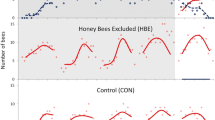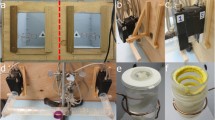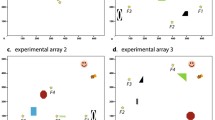Abstract
The task of nectar foraging in honey-bees is partitioned between foragers and receivers. Foragers typically transfer a nectar load in the nest as sub-loads to several receivers rather than as a single transfer. Foragers experience delays in finding receivers and use these delays to balance the number of foragers and receivers. A short delay results in the forager-recruiting waggle dance whereas a long delay results in the receiver-recruiting tremble dance. Several nectar transfers increase the cost of this system by introducing additional delays in finding extra receivers. We tested four hypotheses to explain the occurrence of multiple transfer. We found no evidence that multiple transfer is due to different crop capacities of foragers and receivers or that it results from extensive trophallactic interactions with nest-mates. Receiver bees frequently evaporate nectar in their mouthparts to hasten the production of honey. The suggestion has been made that multiple transfer is driven by receivers who take partial loads from foragers to enhance nectar evaporation. An alternative suggestion is that foragers drive multiple transfer to gain better information on the balance of foragers and receivers. Multiple sampling of the delay in finding a receiver reduces the standard deviation of the delay mean and so provides foragers with better information than is provided by a single delay. The enhanced-evaporation hypothesis predicts that receivers break foragers' first transfer whereas the information improvement hypothesis predicts foragers break their first transfers. Furthermore, only the information improvement hypothesis predicts a high level of multiple receptions. Data on transfer break-off and receiver behaviour strongly support the information improvement hypothesis and reject the enhanced-evaporation hypothesis. We suggest that multiple transfer is an adaptive sampling mechanism, which improves foragers' information on colony work allocation, and that multiple sampling is a common feature of social insect societies.
Similar content being viewed by others
Author information
Authors and Affiliations
Additional information
Electronic Publication
An erratum to this article is available at http://dx.doi.org/10.1007/s002650100340.
Rights and permissions
About this article
Cite this article
Hart, A., Ratnieks, F. Why do honey-bee (Apis millifera) foragers transfer nectar to several receivers? Information improvement through multiple sampling in a biological system. Behav Ecol Sociobiol 49, 244–250 (2001). https://doi.org/10.1007/s002650000306
Received:
Revised:
Accepted:
Published:
Issue Date:
DOI: https://doi.org/10.1007/s002650000306




